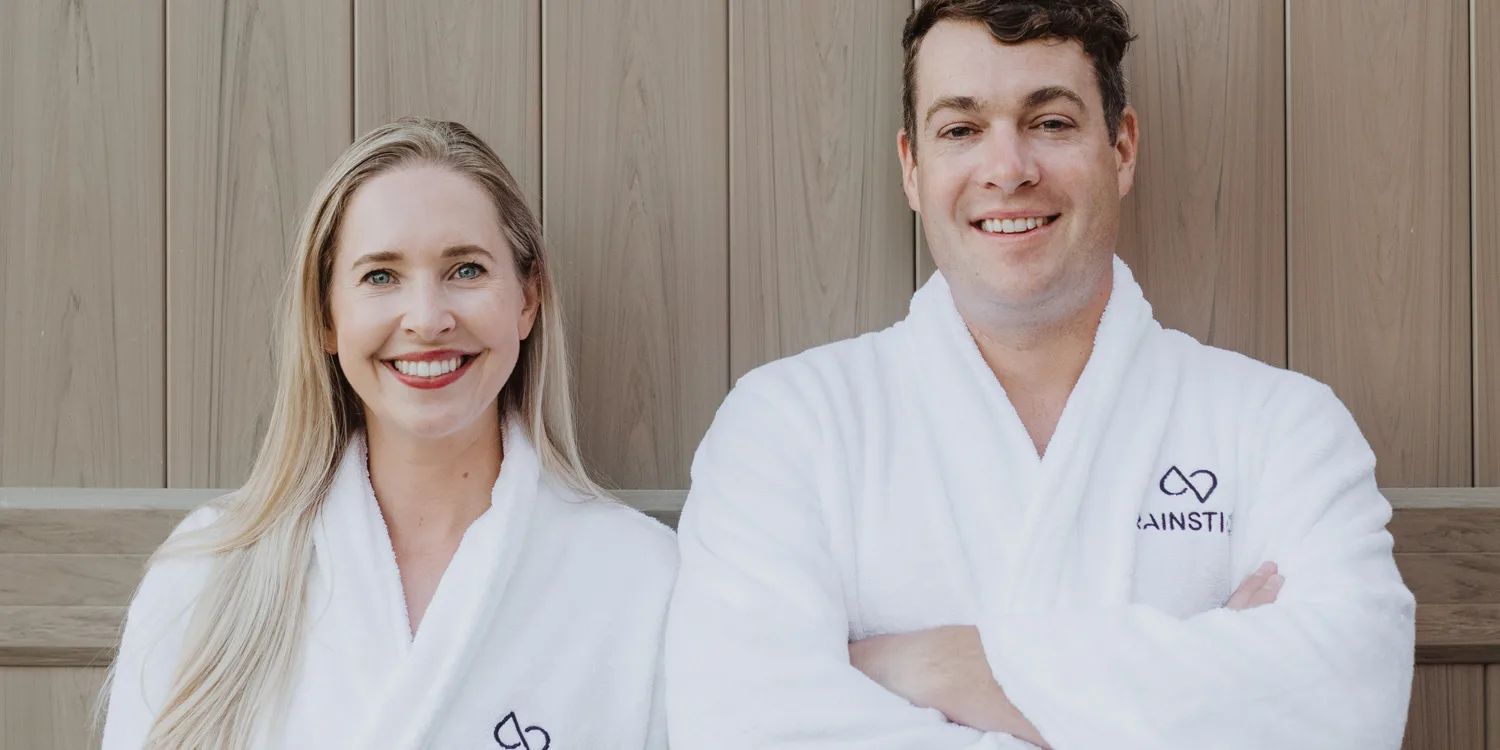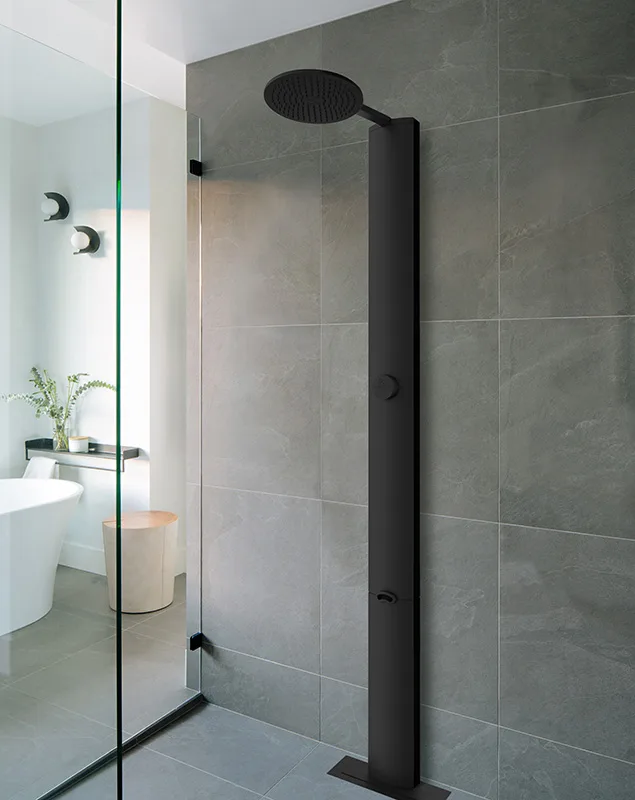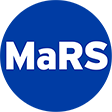Made in Canada: How Rainstick Shower is navigating market uncertainty
By Dominique Ritter | September 23, 2025

In the last few months, CEO Alisha McFetridge has had projects delayed as a result of tariff turbulence. But careful planning, expansion to new markets and a novel product are supporting the company’s mission to help households radically reduce water use.
In this series, we explore how Canadian businesses are contending with global trade disruption.
How much water do you think you use every day? Fifty litres? A hundred? Two hundred?
If you’re like most Canadians, you go through around 220 litres per day — enough to fill two bathtubs — and that’s just at home. When you factor in economic activities, such as agriculture, hydro electricity and manufacturing, Canada is among the largest users in the world of fresh water on a per capita basis.
While this country may be rich in H2O — being home to 20 percent of the globe’s surface freshwater — we’re also home to increasingly severe droughts and ongoing drinking-water crises affecting Indigenous communities. Worldwide, 2.2 billion people don’t have access to safe drinking water and, by 2050, it’s estimated that drought will have an impact on three-quarters of the population.
Which is why Alisha McFetridge, CEO and co-founder of Kelowna startup RainStick Shower, has been thinking about how to make the most of every drop.
“In the residential household, we use way too much water and 50 per cent is in the bathroom,” says McFetridge. “There’s a large opportunity to save water.”
In 2023, RainStick launched its first product: a sleek shower system that cleans and recirculates water to deliver more pressure with less consumption. Later that year, it was named one of Time’s best inventions and, in 2024, it closed $2.6 million in funding.
Between 2023 and 2024, RainStick grew 200 percent. But with the unpredictability of global trade and, as of August 1, a new 35 percent U.S. tariff on Canadian goods, 2025 has been “uncertain,” says McFetridge. “We continue to see growth but we need to start commercializing lower-cost tech and finding new markets that aren’t at our back door.”
We spoke to her about how she’s tackling these challenges.
What kind of environmental impact have you achieved with your products?
A typical 10-minute shower uses about 100 litres of water that touches your skin for a second before it goes down the drain. It’s incredibly wasteful.
RainStick Shower saves up to 80 percent water and 80 percent energy. Essentially, we reuse each drop up to six times. We clean the water in three different ways through the shower session and we also do an automatic cleaning at the end of the session, using our proprietary cleaning solution. Over the course of a year, one RainStick can save a four-person household over 2,000 kilowatt hours of energy and over 40,000 litres of water — that’s almost a swimming pool’s worth of water. The cost savings vary, depending on where you are. In the case of B.C., it’s about $600 per year. In California, it’s about U.S.$1,200.
Our goal is to continue to develop products that allow folks to live a sustainable lifestyle, but in a way that isn’t forcing compromise. Low-flow showerheads often come with trade-offs, like feeling cold from poor coverage, difficulty rinsing out shampoo and even longer shower durations to compensate, which ultimately undermines water savings. I think Seinfeld said it best!

RainStick’s shower system cleans and recirculates water to deliver more pressure with less consumption.
Your products are made in Canada. How has that been impacted by trade disputes?
There were a lot of sleepless nights earlier this year as we were trying to understand the potential ramifications.
We’ve had to look at our product in a lot of detail — how it’s being made and some of the parts that are going into it. For instance, one of our parts was on a hit list for tariffs so we removed it.
How has this on-going uncertainty affected business?
It’s created this feeling among our suppliers, vendors and customers where folks don’t know what’s going to happen.
One of our largest projects to date was ready for contracting but, as a result of tariff uncertainty, the project was delayed. We had to wait a couple of months and we weren’t sure what was happening. Then the scope of the project was reduced. Because of the risk and the uncertainty right now, they don’t want to put up all of the capital. The scope of our transaction decreased by about 50 percent.
How have you adapted?
The good thing about RainStick is that we’re small enough to quickly pivot, update our business model, change how and where we’re selling our product. That doesn’t mean pulling away from the U.S. We still maintain fantastic relationships with our U.S.-based customers, however, with this uncertainty, we’re focusing our efforts on net-new opportunities to diversify our sales portfolio.
The biggest thing for business leaders, and especially those in hard tech, is to make sure that you have runway for an extra six to 12 months. Also, to be extremely conservative with the way that you’re budgeting and planning your forecast, and expect that things aren’t going to work out.
What is resonating with customers? Are they looking to save money or are they looking to take environmental action?
A couple of years ago, there was a really big focus on climate action. Today, folks are looking for ways to cut costs, to reduce that uncertainty. If you think about a person’s hierarchy of needs, they are really concerned about shelter, inflation, a potential recession and their job security. People still care about environmental action but, right now, they are focused on the roof over their head. We’re seeing a lot of folks say, “OK, let’s maybe put a bookmark in this and decide next year if it makes sense for us.”
Where are you seeing areas of opportunity?
Over the last few months, we started shipping units to Europe. We’re particularly interested in expanding to the United Kingdom, because of its high energy and water costs, and focus on climate action. It’s a no-brainer.
Are you seeing an uptick in inquiries due to growing water scarcity?
Absolutely. There are regions that are the right candidates for RainStick Shower, like the West Coast. Then in other places, like New Orleans, where the municipality is saying, “OK, we need to build more housing and we want to build resilient structures going forward.” They’ve selected RainStick Shower as one of the technologies that they’re going to be putting into their new resilient housing initiative.
What’s next for RainStick?
You’ll be seeing our products in more places — in local plumbing stores, new housing projects, at an Airbnb or a boutique hotel. You’ll see RainStick when you travel because one of our goals is to increase our international presence over the next 12 months.
And we’re developing technology that we can sell directly to our Canadian consumers. Specifically, a lower-cost product that is design-generic to complement existing bathrooms.
Find out more about RainStick and 1,200 other ventures on MaRS Connect.
Photos courtesy of Rainstick
 Dominique Ritter
Dominique Ritter